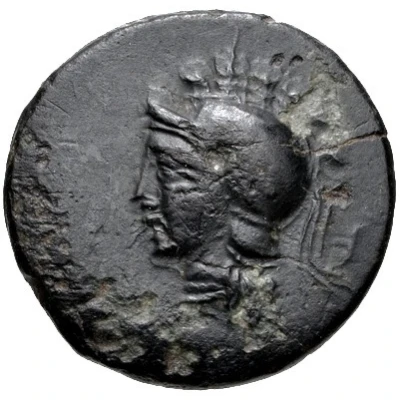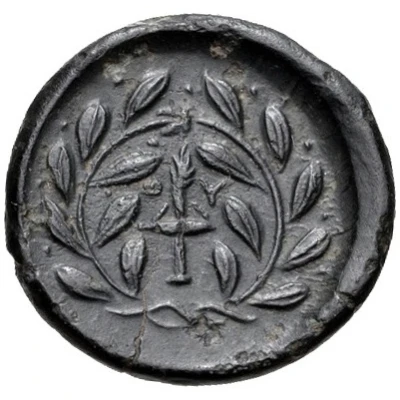


© Classical Numismatic Group, Inc.
Æ16 400 BC - 300 BC
| Bronze | 2.64 g | 16.0 mm |
| Issuer | Thymbra (Troad) |
|---|---|
| Type | Standard circulation coin |
| Years | 400 BC - 300 BC |
| Currency | Drachm |
| Composition | Bronze |
| Weight | 2.64 g |
| Diameter | 16.0 mm |
| Shape | Round (irregular) |
| Technique | Hammered |
| Demonetized | Yes |
| Updated | 2024-10-10 |
| Numista | N#169900 |
|---|---|
| Rarity index | 100% |
Reverse
Torch within wreath
Script: Greek
Interesting fact
The Æ16 coin from Thymbra (Troad) is notable for its unique design, which features a stylized head of a satyr on one side and a quadripartite incuse square on the other. The satyr image is believed to represent the mythical creature that was associated with the god Dionysus, who was revered in the region. The quadripartite incuse square, on the other hand, is a common design element found in ancient Greek coins and is thought to represent the four directions or the four elements (earth, air, fire, and water). The combination of these two symbols suggests that the coin may have been used for religious or ceremonial purposes, as well as for trade and commerce.